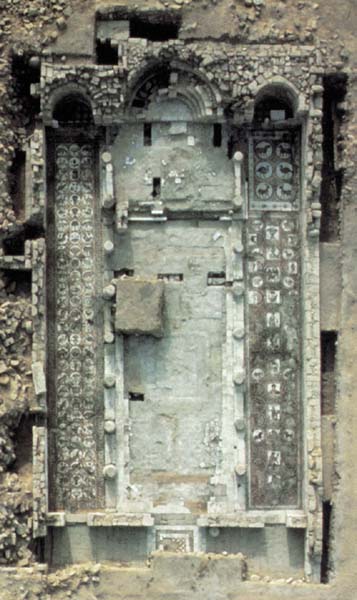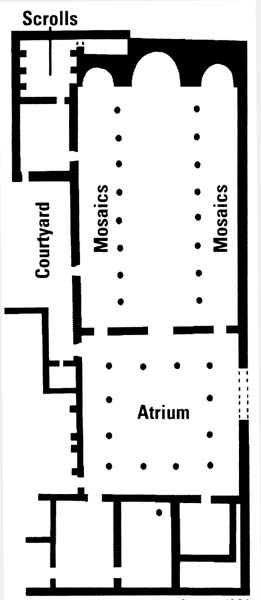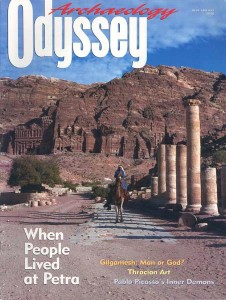Burnt Offerings: New Discoveries from the Petra Scrolls
Sidebar to: When People Lived at Petra


In 1993 a team of archaeologists with the American Center of Oriental Research (ACOR) in Amman, Jordan, discovered a cache of 152 charred papyrus scrolls tucked away inside a building adjoining Petra’s sixth-century A.D. Byzantine church.
About 3 inches wide and tightly rolled, the papyrus scrolls had been completely carbonized by a fire that consumed the church, probably in the early seventh century. Even using the most sophisticated methods, the fragile, charcoal-like documents proved impossible to unroll; the conservators painstakingly peeled away each layer of papyrus in strips and attached each strip to special acid-free tissue paper. The conservation work was completed by a team of Finnish experts in May 1995.
Once the papyri were unwound and reassembled, the conservators photographed, digitized and deciphered the documents using special lighting techniques that helped distinguish the ancient black writing from the burnt, black surface of the scrolls. After more than five years of research, two teams of American and Finnish scholars—led respectively by Ludwig Koenen of the University of Michigan and myself—have deciphered most of the 152 papyrus scrolls.
Already a library member? Log in here.
Institution user? Log in with your IP address.

